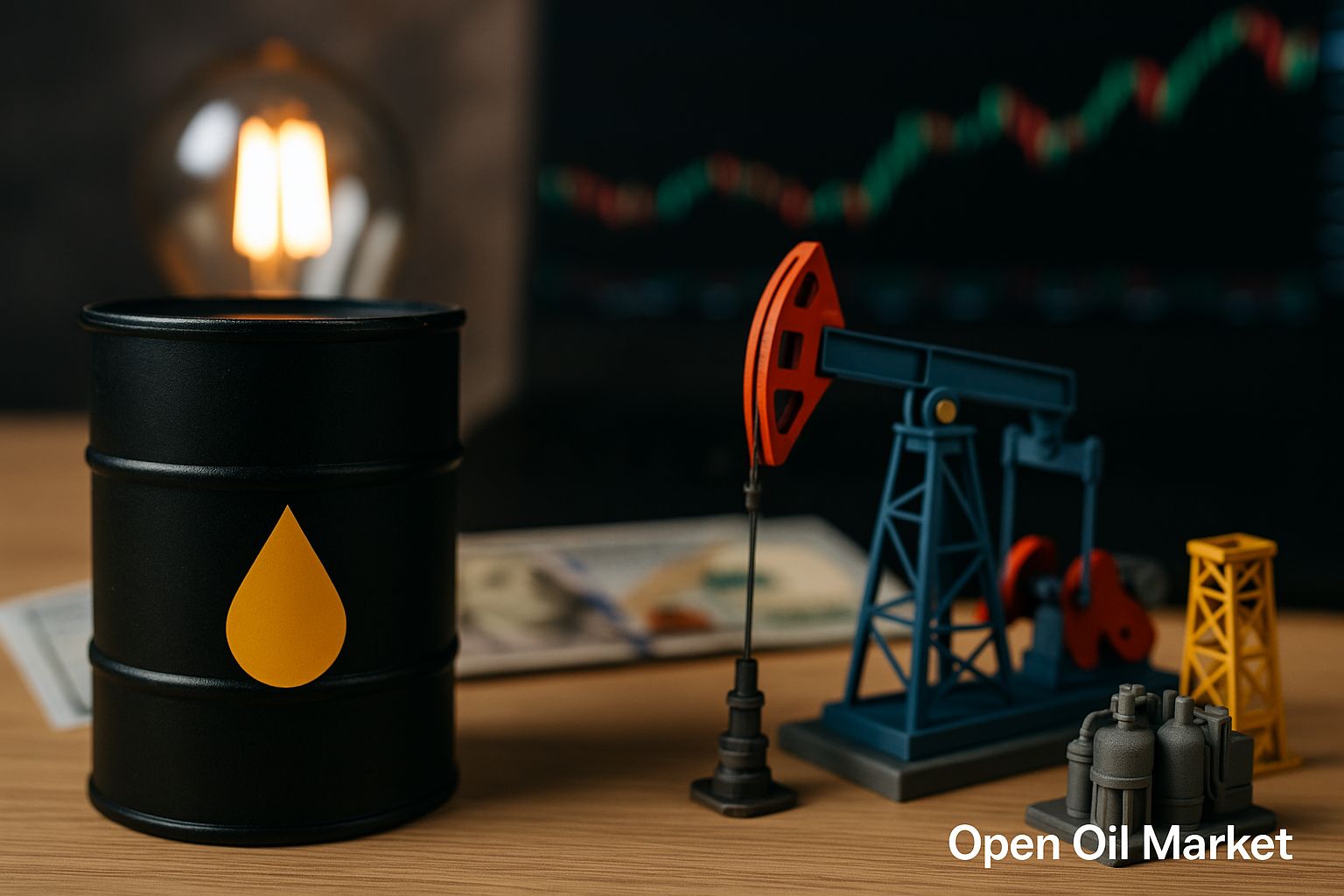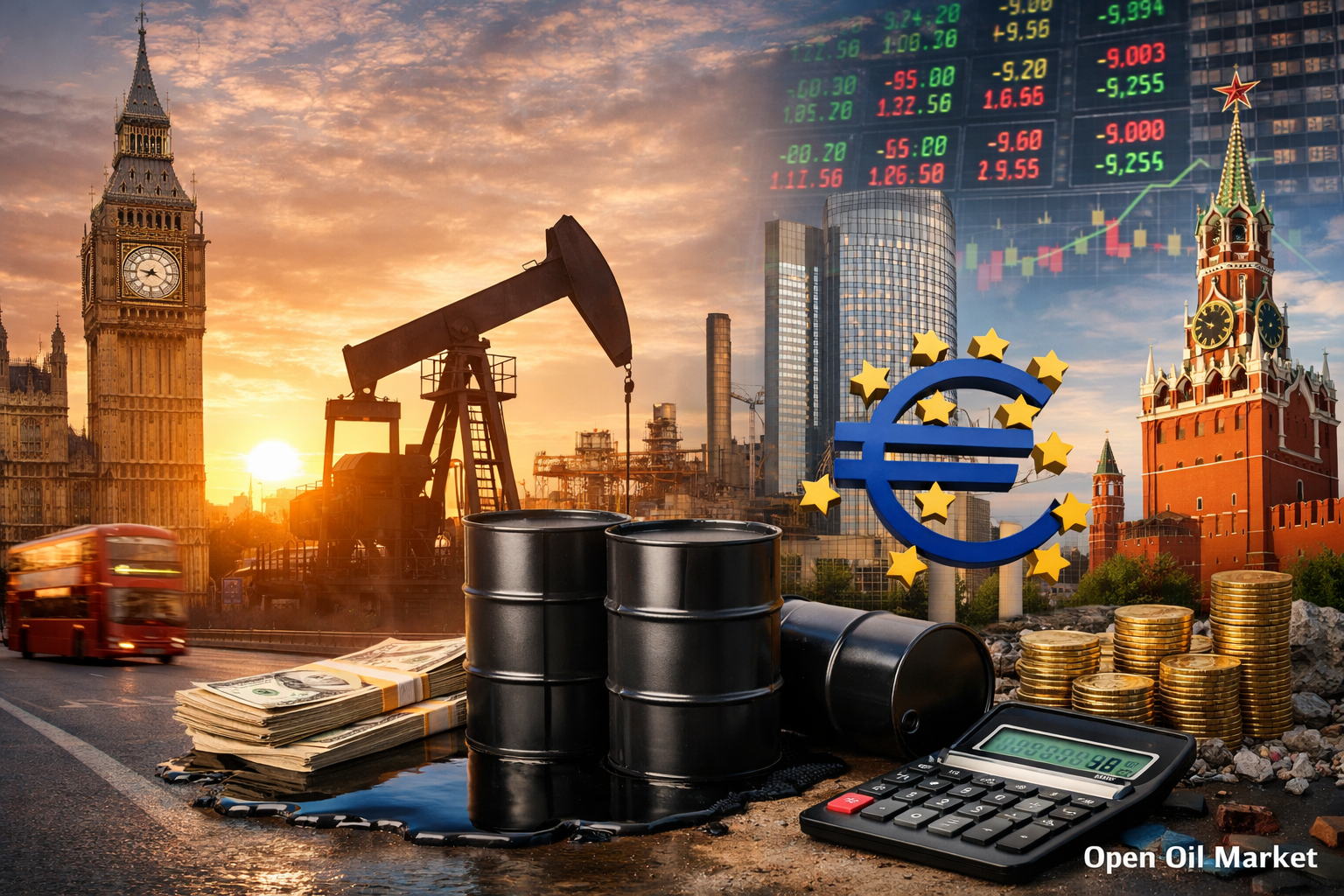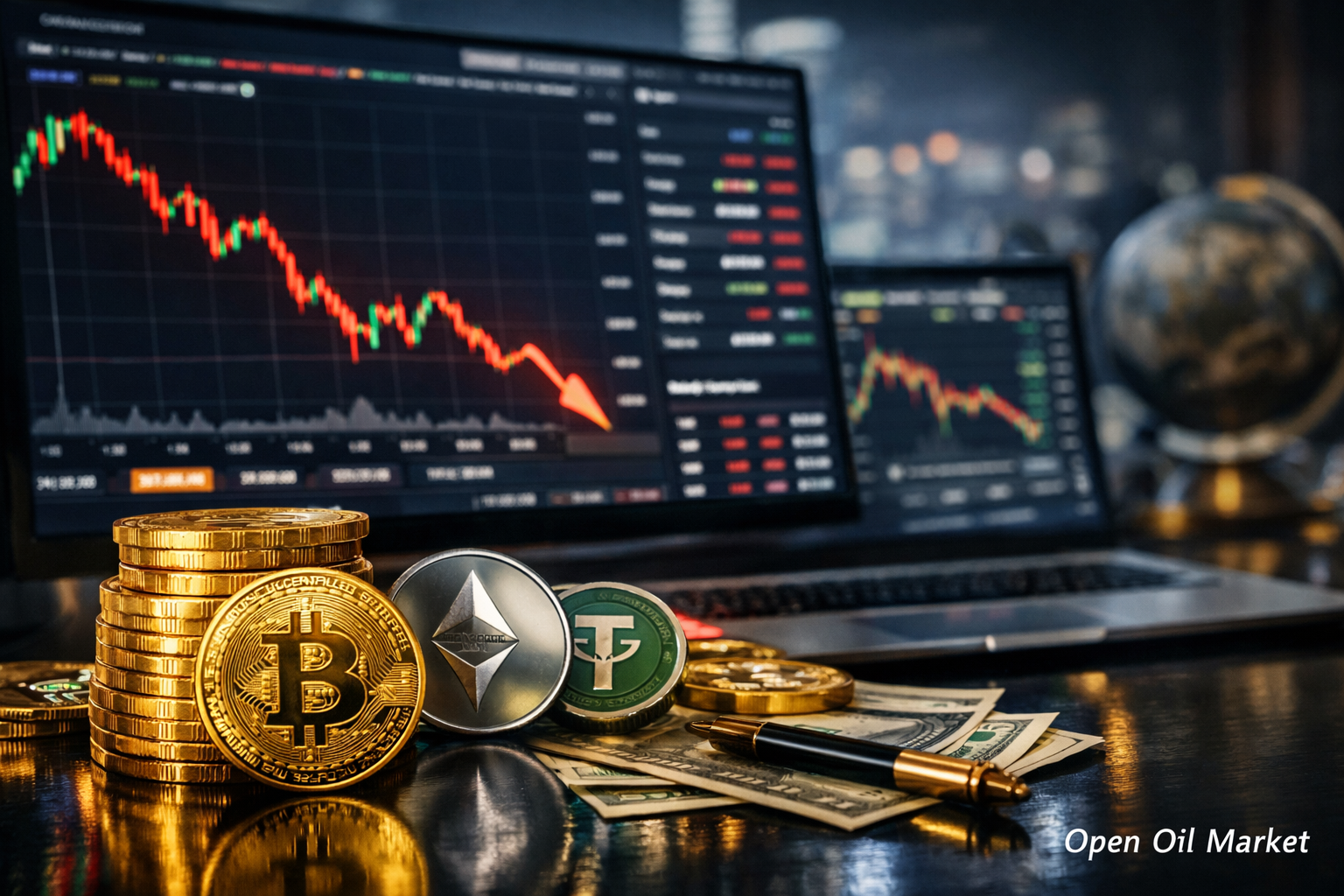
Current Energy Sector News as of October 30, 2025: Strengthening Sanctions Against Russia, OPEC+ Production Increase, Oil, Gas, and Coal Market Situations, Measures to Stabilize Fuel Prices in Russia.
Current events in the fuel and energy sector (FES) as of October 30, 2025, are marked by a combination of divergent trends. The United States has intensified its sanctions against the Russian oil sector by introducing new restrictions on the largest Russian oil companies, exacerbating geopolitical tensions. Concurrently, leading global oil producers are continuing to boost supply: the OPEC+ alliance is gradually increasing its production quotas, aiming to regain lost market share. Against this backdrop, the global oil market remains under pressure from oversupply amid moderate demand—the Brent benchmark prices hover around the mid-$60 per barrel, reflecting a fragile balance of factors. However, recent sanctions news triggered a temporary price spike above $66, highlighting the market's sensitivity to geopolitical risks. The European gas market shows relative resilience: gas storage facilities in the EU are over 85% full, providing a buffer before the winter season and keeping prices at moderate levels. Meanwhile, the global energy transition is gaining momentum—new records for generation from renewable energy sources are being set in many regions, although countries have not yet abandoned traditional resources to ensure the reliability of their energy systems. In Russia, following a recent fuel crisis, authorities are continuing to implement measures to stabilize the domestic fuel market—thanks to export restrictions and subsidies, wholesale prices have been restrained, preventing gasoline shortages.
Oil Market: Oversupply and Weak Demand Pressure Prices
Global oil prices remain at a reduced level under the influence of oversupply amid moderate demand. The North Sea Brent is trading around $65 per barrel, while American WTI is about $61, which is roughly 10–15% lower than a year ago. The situation is determined by several factors:
- OPEC+ Production Increase. The alliance is systematically increasing supply in the market: in October, quotas were raised by approximately 137 thousand barrels per day, and a similar step is expected in November. Since April, eight OPEC+ countries have collectively added about 2.7 million barrels per day to their production, leading to an increase in global oil and petroleum product inventories.
- Slowing Demand Growth. Oil consumption is rising much more slowly than in previous years. The IEA forecasts a demand growth of only about +0.7 million barrels per day in 2025 (compared to over 2 million barrels per day in 2023). This is affected by a slowing global economy, the effect of previously high prices (which stimulated energy conservation), and structural shifts—such as the accelerated spread of electric vehicles. A slowdown in industrial growth in China is also limiting the appetite of the world’s second-largest oil consumer.
- Geopolitical Factors. The escalation of sanctions against Russia restrains part of its exports—the recent new restrictions from the United States on Russian oil companies triggered a temporary price spike above $66, underscoring the influence of political risks. At the same time, there has been no progress in dialogue between the US and Russia, maintaining uncertainty. As a result, quotes remain within a narrow range without a clear impetus for either growth or decline.
In aggregate, supply exceeds demand, preventing prices from rising significantly. Some analysts believe that if current trends continue, by 2026 the average Brent price could fall to $50 per barrel.
Gas Market: Europe Nears Full Storage, Prices Stable
The focus of the gas market is on Europe, which is completing its preparation for winter. By the end of October, EU underground storage facilities were nearly 90% full, providing a solid reserve for cold weather. Exchange prices for gas remain at moderate levels: futures at the TTF hub trade around €30/MWh (approximately $380 per 1,000 cubic meters), significantly lower than last year’s levels.
The high level of reserves has been possible thanks to record liquefied natural gas (LNG) imports, which have compensated for reduced pipeline supplies from Russia and other traditional sources. LNG now accounts for about half of the EU’s gas supply, with the US being the main supplier. The European market appears balanced, although the increased dependence on LNG makes it vulnerable to external factors—such as competition for gas from Asia. Currently, the situation is favorable for European consumers: storage is full, and prices remain relatively low as winter approaches.
International Politics: Sanctions Confrontation Escalates, Dialogue Stalls
The sanctions confrontation between the West and Russia has intensified by the end of October. The US introduced new restrictions on the Russian oil sector, effectively prohibiting cooperation with two of Russia's largest oil companies. Moscow condemned this step, stating its readiness to redirect exports to friendly countries and take retaliatory measures to protect its interests.
Meanwhile, the political dialogue remains stalled. After the summer meeting of the leaders of Russia and the US in Alaska, no progress has been made: Washington is unwilling to ease sanctions without resolving the conflict, and Moscow refuses to change its stance under pressure. Even radical new measures are being discussed, emphasizing the rigid approach from the West.
Thus, the sanctions pressure on the energy sector is growing without any diplomatic breakthroughs, maintaining high geopolitical risks for the FES market.
Asia: India and China Increase Imports While Supporting Domestic Production
The largest Asian consumers—India and China—continue to actively purchase energy resources, simultaneously striving to develop domestic production. New Delhi has made it clear that it cannot sharply reduce imports of Russian oil and gas without jeopardizing energy security. As a result, Moscow is providing Indian buyers with favorable terms (discounts on Urals oil prices relative to Brent), and Indian imports of oil and petroleum products from Russia remain high. Concurrently, India is investing in exploration and production on its territory to gradually reduce dependency on external supplies.
China is also taking advantage of the situation and increasing purchases of cheap Russian raw materials—Beijing has not joined the Western sanctions and is benefiting from price discounts on oil and gas from Russia. Oil and gas imports into China remain near record levels in 2025, although growth has slowed due to the high base from last year. China's national oil and gas production is gradually increasing (growth of a few percentage points per year), which partially offsets demand but does not eliminate significant dependence on imports. Estimates indicate that China still meets about 70% of its oil needs and approximately 40% of its gas needs through imports. Thus, India and China continue to play a key role in the global raw materials market, remaining the largest consumers and importers of energy resources amid efforts to develop their own resource base.
Coal: Demand in Asia Remains High, Prices Stable
Despite the rapid growth of renewable energy sources, global coal consumption remains high, especially in Asia. China and India continue to burn huge amounts of coal for electricity generation, sustaining demand. Major exporters (Indonesia, Australia, Russia, South Africa) have increased production, keeping coal market prices in a stable moderate range.
Russian Oil Products Market: Domestic Measures Stabilizing Prices
In the Russian fuel market, steps to normalize prices continue after the recent surge. The main measure has been a temporary ban on the export of gasoline and diesel—extended until the end of September, which has increased fuel supply domestically. In October, restrictions began to be partially lifted for large refineries, provided they satisfy the domestic market (export remains closed for small producers). At the same time, the government has intensified control over fuel distribution following unscheduled shutdowns at several refineries (due to accidents and drone attacks in the summer). Producers are required to prioritize meeting domestic needs and prevent speculation, while relevant agencies are working on transitioning to direct contracts between refineries and gas station networks, bypassing speculators. Monetary compensations remain in place—such as the "damper" and subsidies—to encourage oil companies to keep more gasoline and diesel on the domestic market despite lost export profit.
The set of measures is already yielding results. Thanks to the export ban, hundreds of thousands of tons of fuel are remaining within the country each month, alleviating the sharpness of shortages. Wholesale prices have stabilized after record peaks, while retail prices at gas stations have increased by only about 5% since the beginning of the year (within the bounds of inflation). The fuel crisis has been managed: gas stations are supplied with fuel, and authorities state their readiness to limit exports again or implement new mechanisms, to prevent a recurrence of price spikes.




